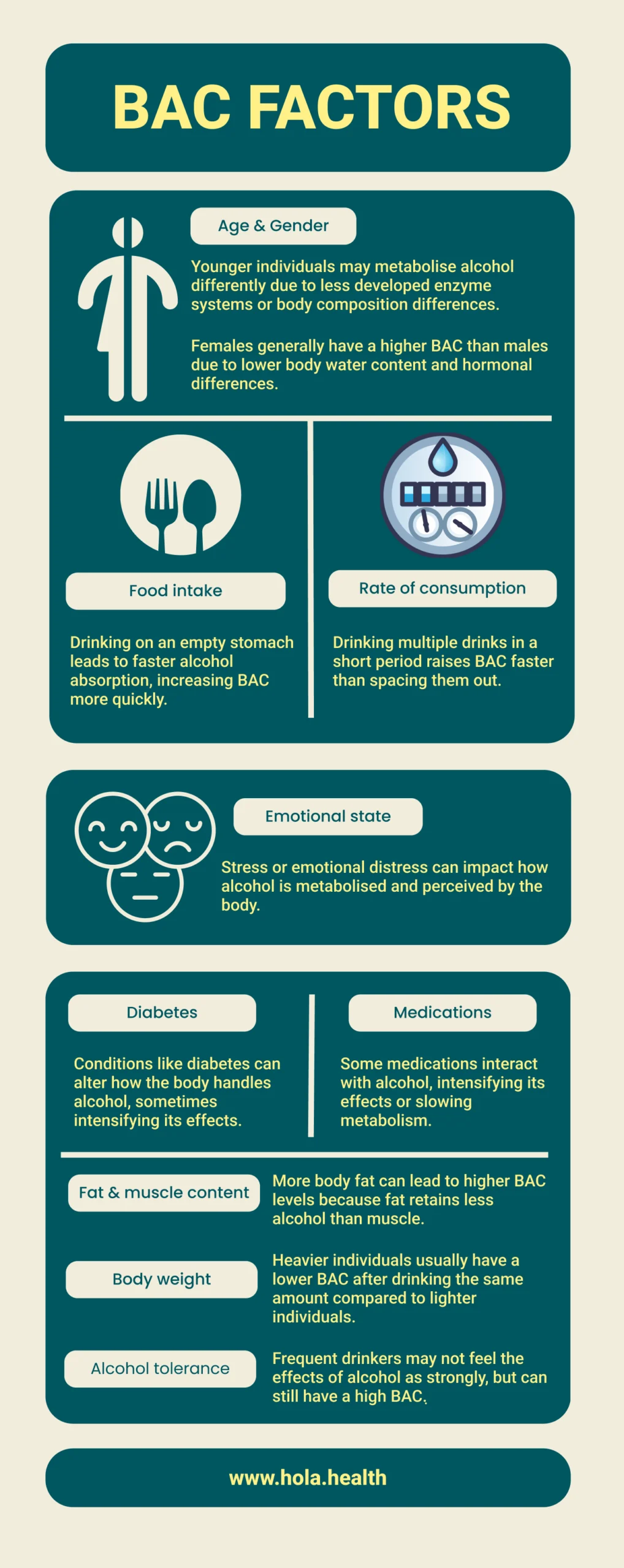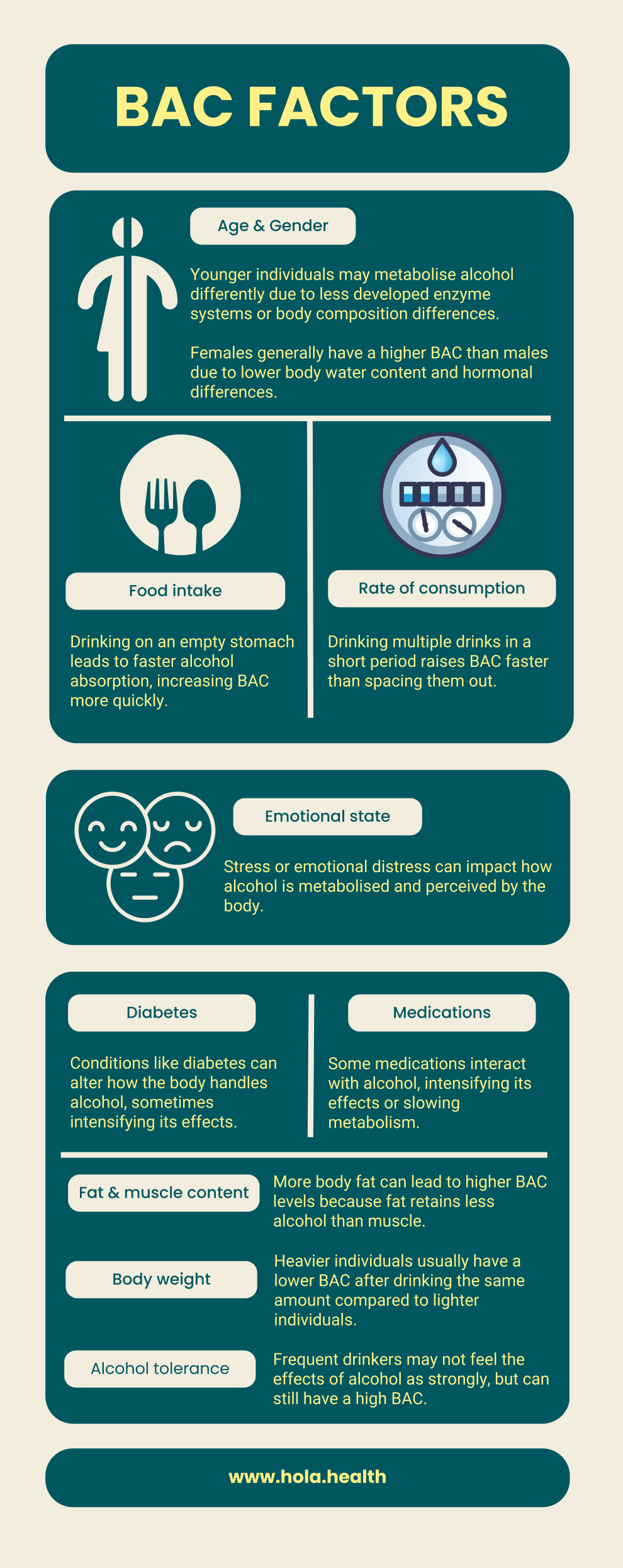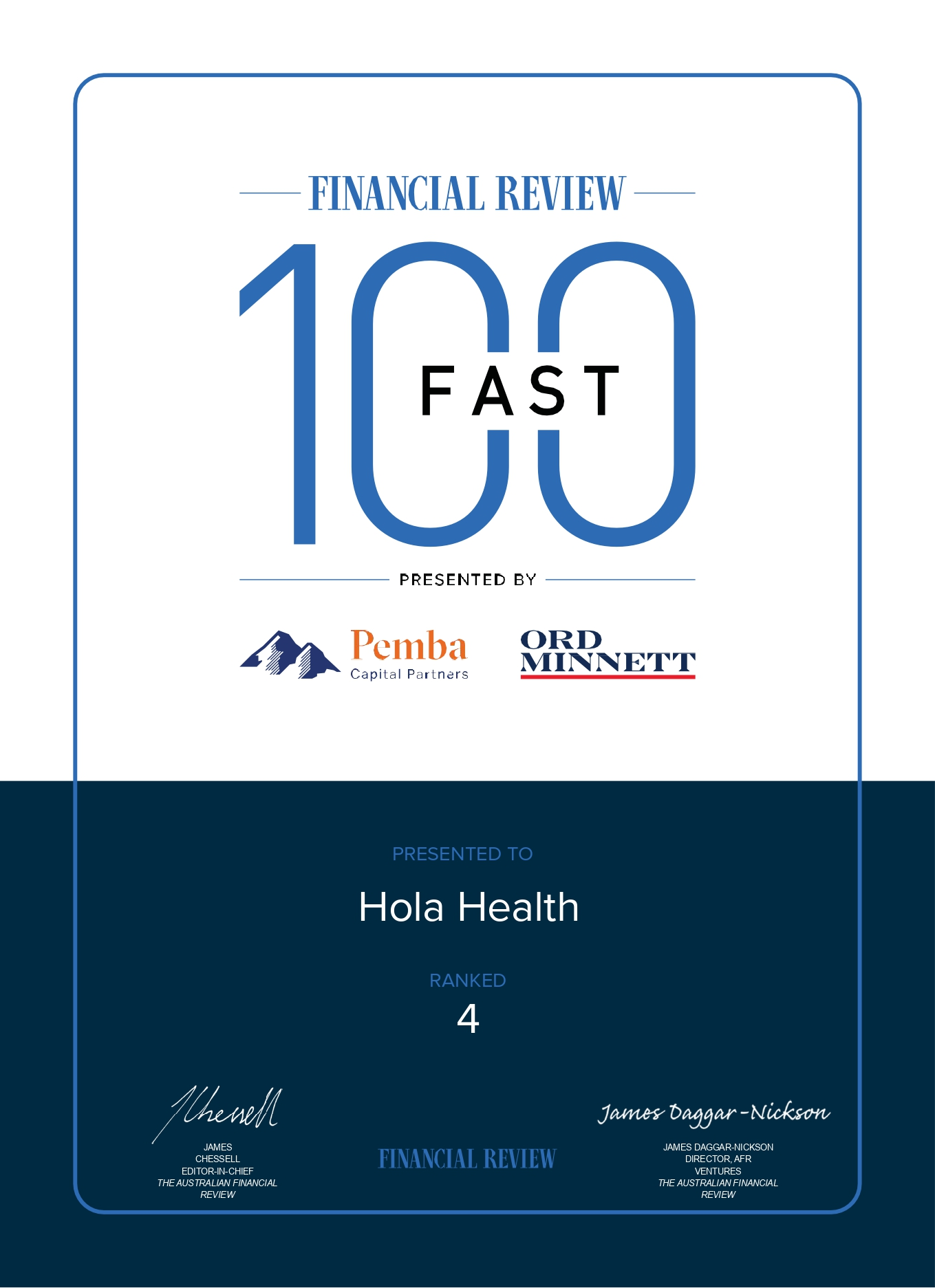Blood Alcohol Concentration Calculator
Calculate your blood alcohol concentration to get a rough estimate of your individual blood alcohol concentration (BAC).
What is the BAC in Australia?
Blood Alcohol Concentration (BAC) refers to the amount or portion of alcohol present in your body’s bloodstream. It is typically measured in grams of alcohol per 100 millilitres of blood. In Australia, A BAC of 0.05% is the legal limit for driving, depending on the type of licence. This calculator provides a rough estimate of the amount of alcohol in your bloodstream and your blood alcohol concentration (BAC). It factors in your weight and the number of drinks consumed over a set period to offer an approximate BAC level.
Estimate your blood alcohol concentration
All content and media published on Hola are provided for informational purposes only and are not a replacement for professional medical advice. It should not be used as health or personal advice. Always consult your doctor or a qualified healthcare professional with any questions about your health or medical condition. Do not ignore or delay seeking medical advice because of something you have read on this website. In case of a medical emergency, contact your doctor, visit the nearest hospital emergency department, or call emergency services right away.
What are the key points about BAC?
- The measurement of BAC is in grams of alcohol per 100 milliliters of blood (g%).
- The upper limit of BAC in Australia is 0.05% for driving. It varies and lowers depending on the licence.
- Factors influencing BAC include (and are not limited to) speed of alcohol consumption, weight, sex, and alcohol tolerance.
- Effects of BAC vary from mild effects (relaxation) to serious consequences (like loss of consciousness).
- Alcohol can initially have stimulant effects, but as BAC increases, the depressant effects become more pronounced.
Examples of BAC levels with meaning
| BAC Level | Potential Effects |
|---|---|
| 0.00% | There’s no alcohol in your blood (you’re sober). |
| 0.02% | Altered mood, relaxation, and a slight loss of judgment. |
| 0.05% | Feeling uninhibited, lowered alertness, and impaired judgment. |
| 0.08% | Reduced muscle coordination, difficulty detecting danger, impaired reasoning. |
| 0.10% | Reduced reaction time, slurred speech, and slowed thinking. |
| 0.15% | Altered mood, nausea, vomiting, and loss of balance and some muscle control. |
| 0.15% to 0.30% | Confusion, vomiting, and drowsiness. |
| 0.30% to 0.40% | Likely alcohol poisoning, loss of consciousness. |
| Over 0.40% | Risk of coma and death due to respiratory arrest (absence of breathing). |
What does the BAC calculation mean?
- 0.05 g% blood alcohol level – It is generally achieved after consuming around 2 standard drinks for men and 1 standard drink for women within the first hour. And then one standard drink/hour thereafter. But many factors like gender, food intake, weight and more can affect BAC.
- 0.20 – 0.29 g% blood alcohol level – It is generally a feeling of confusion or disorientation, in which you may need help walking. Nausea or vomiting is common at this level.
- 0.05 – 0.15 g% blood alcohol level – It is likely to put you at risk. Effects include impaired judgment and low inhibitions.
- 0.08 – 0.15 g% blood alcohol level – It is a risky state. Effects include unstable emotions, nausea, vomiting and slurred speech.
What is meant by standard drink?
A standard drink is roughly 10g of pure alcohol, says the Australian Government Department of Health and Aged Care . This can vary by beverage type (beer, wine, spirits) and size.
How many drinks is 0.05 for women?
Does urinating lower BAC?
What alcohol level is too high?
How many standard drinks would I drink before I reach 0.05?


What BAC level is good for you?
No amount of alcohol is good for your health. According to the World Health Organization (WHO), “safe” alcohol consumption doesn’t mean there are health benefits. That glass of wine for dinner may have some antioxidants, but the benefits aren’t outweighing the negative impacts of alcohol on your body.
How is BAC measured?
Can I get medical advice, even late at night, for BAC?
- Hangover-related symptoms (nausea, dehydration, etc.)
- Prescription requests or medication guidance
- Medical certificates if alcohol affects work or study
- General health advice, including mental health support
- Access to care for minor injuries or illnesses anytime
Read more about telehealth
Access telehealth services
Doctors Brisbane | Doctors Melbourne | Doctors Perth | Doctors Sydney | Doctors near me | Doctors Canberra | Doctors Adelaide | Doctors Darwin | Doctors Hobart
After hours Doctor Brisbane | After hours Doctor Melbourne | After hours Doctor Perth | After hours Doctor Sydney | After hours Doctor Hobart | After hours Doctor Gold Coast | After hours Doctor Canberra | After hours Doctor Adelaide | After hours Doctor Darwin | After hours GP | After hours doctor
Medical certificate | Medical certificate online for work | Medical certificate for school | Medical certificate for Uni | Medical certificate for stress | Carer’s leave certificate | Medical certificate NSW | Medical certificate QLD | Medical certificate VIC | Medical certificate WA | Doctors certificate online | Multi-day Certificate | Sick certificate online | GP medical certificate | Doctors note | Telehealth medical certificate | 2-day medical certificate | Medical certificate for sick leave
Instant scripts | eScript | Online prescriptions | Online prescriptions Sydney | Online prescriptions Melbourne | Online prescriptions Perth | Online prescriptions Brisbane | Online Rx prescription
Online referrals | Blood test referral | X-Ray referral | Pathology referral | Radiology referral | Specialist referral | Gynaecologist referral | Audiology referral | Ophthalmologist referral | Paediatrician referral | Ent specialist referral | Endocrinologist referral | Dermatologist referral | Urologist referral | Gastroenterologist referral
Telehealth appointment | Online Doctor | Bulk Billing Doctors | Doctors on-demand | Instant consult | Covid antiviral | Dial a Doctor | Online GP | Doctor appointment | Bulk-billing doctors | Telehealth pricing | GP online chat | Australian doctor | Web doctor | Home doctor | 24-hour doctor















